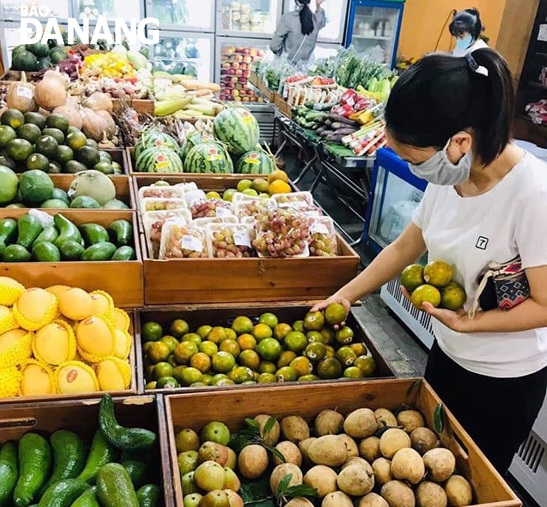Traceability of food products ensures clean meals
Traceability of food products is a solution allowing consumers to easily gather information from the final product back to its original place of production, verifying the product through each stage of production, processing, and distribution.
 |
| Ilustrative photo. Photo: Internet |
In recent times, the Da Nang Food Safety Management Board has implemented several traceability activities aimed at different target groups, with the objective of enhancing food quality and ensuring clean meals for the public.
According to the Food Safety Management Board, the food traceability project at phase 1 is a key component of the Smart City Development Plan for the 2018-2025 period, with an orientation toward 2030. The project assigns responsibilities to state management agencies, producers, and consumers, with an emphasis on food safety.
Recently, the Goods Traceability Team, under the city's Food Safety Management Board, has organised training courses and collaborated with various units and localities to implement food traceability systems.
Mrs. Ngo Thi Kim Thuong, Deputy Manager of the Goods Traceability Team, highlighted that one of the benefits of food traceability is protecting brand reputation and effectively enhancing the value of businesses. It also boosts competitiveness and attracts buyers. Consumers are increasingly demanding better product quality, especially for daily food items such as pork, beef, chicken, and eggs. Therefore, the application of traceability strongly contributes to improving the competitiveness of business products both locally and beyond, thereby boosting sales.
“To meet this demand, food production and business establishments must be transparent about the origin of their products and take full legal responsibility for the information provided regarding the food sources they produce and trade. This helps to enhance brand reputation and consumer trust when choosing and using products with QR codes for food traceability,” Mrs. Thuong explained.
Currently, about 50 businesses in the city have registered to join the food traceability system. These include suppliers of pork (21 businesses), beef (2 businesses), chicken (10 businesses), and eggs (7 businesses).
Building on this success, local authorities have proactively implemented food traceability alongside safety guidelines and awareness programmes for food production, business, and street food vendors.
Recently, the Hai Chau District-based Health Department has led initiatives in coordination with related units to promote food safety standards and implement the issuance of QR codes to food service establishments along various streets, using the Danang City Food traceability application.
According to Mrs. Pham Thi Thuy Phuong, Head of the Hai Chau District Health Department, the department has already trained and issued 1,400 QR codes to food service businesses, accounting for 53.8% of the total QR codes issued citywide.
“This approach aims to enhance service standards, ensure food safety, attract customers to the culinary streets, and contribute to the local economy. Moving forward, the unit will focus on promoting the standards for upgrading food service establishments and issuing QR codes through the city's traceability system on the Danang City Food app for all food businesses in 13 wards,” Mrs. Phuong added.
Following this initiative, the city's Food Safety Management Board has recently rolled out plans to expand the use and operation of the food traceability system at food safety-certified markets. It is estimated that around 460 food service traders at markets across the city will apply this system to improve the quality of products offered to consumers.
Mr. Nguyen Tan Hai, Head of the Food Safety Management Board, stated that the aim of food traceability is to increase the responsibility of state management agencies, producers, and consumers. The commitment of businesses and the support of consumers are key factors in advancing this process and fostering a community of smart and responsible shoppers.
Reporting by PHAN CHUNG - Translating by TRUC VY